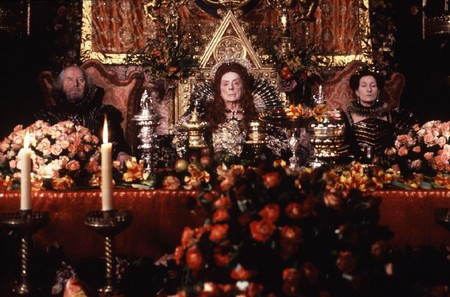

Pictures and mentions of the actor
My pathway engages the theme of history in both the novel and the film. The four centuries through which Orlando lives provide an evocative and symbolic background for the story.
Potter says that ‘ in order to keep faith with Virginia Woolf’s use of real time ending the novel, the film had to end when it was completed-1992.’ Potter does this successfully as not only does she take on this idea the ending is not formed until everything else is shot. Although the film ending and the novel endings are different Potter loyally attempts to ‘think myself in Virginia Woolf’s consciousness’ and create a appropriate ending that Woolf herself might have written if she had lived until 1992.
let's see what happens
Intertextuality in Orlando: gender fluidity and the re-shaping/accentuasion of themes and essence.
Creating your own online ‘pathway’, use the SP-ARK multi-media archive to reflect upon and illustrate the intertextual nature of Orlando (1928 and 1992).
Some explanations for Potter's decision on certain locations, set and costume design, and focusing on cinematography.
Using different color pallets within costumes and set designs help to portray the different epochs the film takes the watcher through. Through these different examples, one sees gold, reds, and oranges within the Elizabethan period and then later on towards the end of the film, one can view only blues and greens as Orlando enters into the Victorian period. The use of different colors helps guide the watcher throughout the vast amount of time traveled in Orlando.
The focus here is on the nature of design in adaptation. One example includes key aspects such as location from pre-production sketches to how the final set looks in production, and how this relates to the words found in Woolf's novel. Additionally it's interesting to note the differences in adaptation across Orlando's 400 year journey.
Copyright ©2025 Adventure Pictures. Some rights reserved. Non-commercial use of text and images in which Adventure Pictures holds the copyright is permitted, with attribution, under the terms and conditions of a Creative Commons BY-NC-ND License.